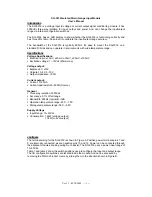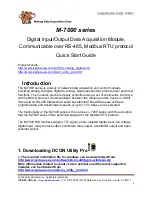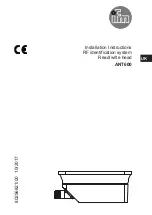
Chapter 8
Counters
©
National Instruments Corporation
8-13
•
Method 3: Measure Large Range of Frequencies Using Two
Counters
—By
u
sing two co
u
nters, yo
u
can acc
u
rately meas
u
re a
signal that might be high or low freq
u
ency. This techniq
u
e is called
reciprocal freq
u
ency meas
u
rement. In this method, yo
u
generate a long
p
u
lse
u
sing the signal to meas
u
re. Yo
u
then meas
u
re the long p
u
lse
with a known timebase. The USB-621
x
device can meas
u
re this long
p
u
lse more acc
u
rately than the faster inp
u
t signal.
Yo
u
can ro
u
te the signal to meas
u
re to the So
u
rce inp
u
t of Co
u
nter 0,
as shown in Fig
u
u
me this signal to meas
u
re has freq
u
ency
F1. Config
u
re Co
u
nter 0 to generate a single p
u
lse that is the width of
N
periods of the so
u
rce inp
u
t signal.
Figure 8-13.
Method 3
Then ro
u
te the Co
u
nter 0 Internal O
u
tp
u
t signal to the Gate inp
u
t of
Co
u
nter 1. Yo
u
can ro
u
te a signal of known freq
u
ency (F2) to the
Co
u
nter 1 So
u
rce inp
u
t. F2 can be 80MHzTimebase. For signals that
might be slower than 0.02 Hz,
u
se a slower known timebase. Config
u
re
Co
u
nter 1 to perform a single p
u
lse-width meas
u
rement. S
u
ppose the
res
u
lt is that the p
u
lse width is J periods of the F2 clock.
S
OURCE
OUT
COUNTER 0
S
OURCE
GATE
OUT
COUNTER 1
S
ign
a
l to
Me
asu
re (F1)
S
ign
a
l of Known
Freq
u
ency (F2)
CTR_0_
S
OURCE
(
S
ign
a
l to Me
asu
re)
CTR_0_OUT
(CTR_1_GATE)
CTR_1_
S
OURCE
Interv
a
l to
Me
asu
re
0 1 2
3
…
N
















































